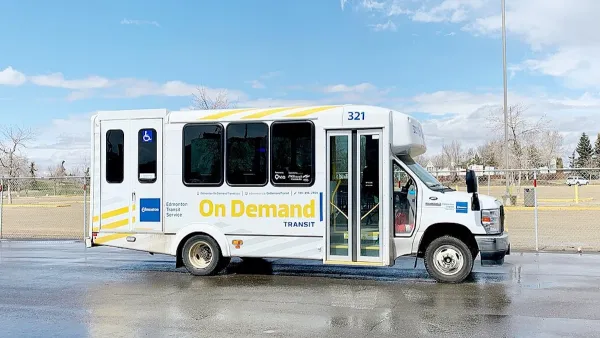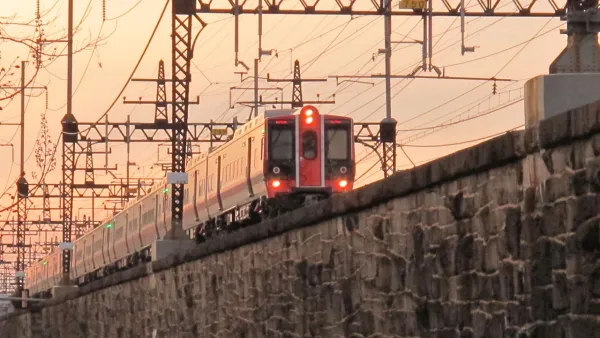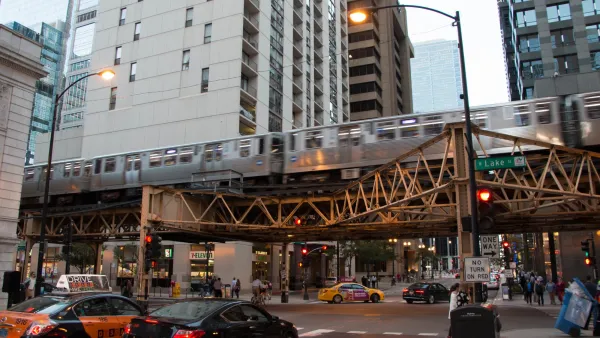In Minnesota, local transit agencies are seeing growth in ridership for on-demand microtransit services since the start of the pandemic.

The benefit of microtransit is tremendous to riders like Andrew Landon, a Minneapolis-St. Paul area resident who uses a wheelchair. Landon told Minnesota Reformer reporter H. Jiahong Pan that he prefers to use microtransit over dial-a-ride and fixed-route services because it allows him to “live more spontaneously.” Microtransit offers a middle ground between fixed-route transit services and rideshare apps like Uber and Lyft, shuttling riders to their destination on demand in low-density areas.
Landon is not alone in his preference for microtransit. While train and bus services have struggled to climb to their pre-pandemic ridership numbers, Minnesota Valley Transit Authority’s on-demand microtransit program, Connect, has seen an increase in ridership so high that it struggles to keep up with hiring drivers.
Services like Connect offer alternatives to calling a ride on an app, usually arrive as wheelchair-accessible minibuses, and cost as little as $2.50. Riders can pay with card, cash, or through the app. This flexibility allows for a more accessible service than fixed-route transit or rideshare.
Connect also offers more stable employment to drivers, who are W-2 employees and have the option to join a union. In contrast, most rideshare companies hire drivers as independent contractors. MVTA Chief Operating Officer Matt Fyten told Pan that “partnering with transportation network companies such as Lyft is something MVTA is looking into,” but they don’t intend to use Lyft as an excuse to not hire more drivers.
While agencies like MVTA are struggling to keep up with demand for microtransit, support for a one-year pilot program from the state legislature and the Minnesota Department of Transportation will give new riders a chance to try the service.
FULL STORY: Local transit agencies mimicking Uber and Lyft are seeing big ridership gains

National Parks Layoffs Will Cause Communities to Lose Billions
Thousands of essential park workers were laid off this week, just before the busy spring break season.

Retro-silient?: America’s First “Eco-burb,” The Woodlands Turns 50
A master-planned community north of Houston offers lessons on green infrastructure and resilient design, but falls short of its founder’s lofty affordability and walkability goals.

Delivering for America Plan Will Downgrade Mail Service in at Least 49.5 Percent of Zip Codes
Republican and Democrat lawmakers criticize the plan for its disproportionate negative impact on rural communities.

Test News Post 1
This is a summary

Test News Headline 46
Test for the image on the front page.

Balancing Bombs and Butterflies: How the National Guard Protects a Rare Species
The National Guard at Fort Indiantown Gap uses GIS technology and land management strategies to balance military training with conservation efforts, ensuring the survival of the rare eastern regal fritillary butterfly.
Urban Design for Planners 1: Software Tools
This six-course series explores essential urban design concepts using open source software and equips planners with the tools they need to participate fully in the urban design process.
Planning for Universal Design
Learn the tools for implementing Universal Design in planning regulations.
EMC Planning Group, Inc.
Planetizen
Planetizen
Mpact (formerly Rail~Volution)
Great Falls Development Authority, Inc.
HUDs Office of Policy Development and Research
NYU Wagner Graduate School of Public Service





























